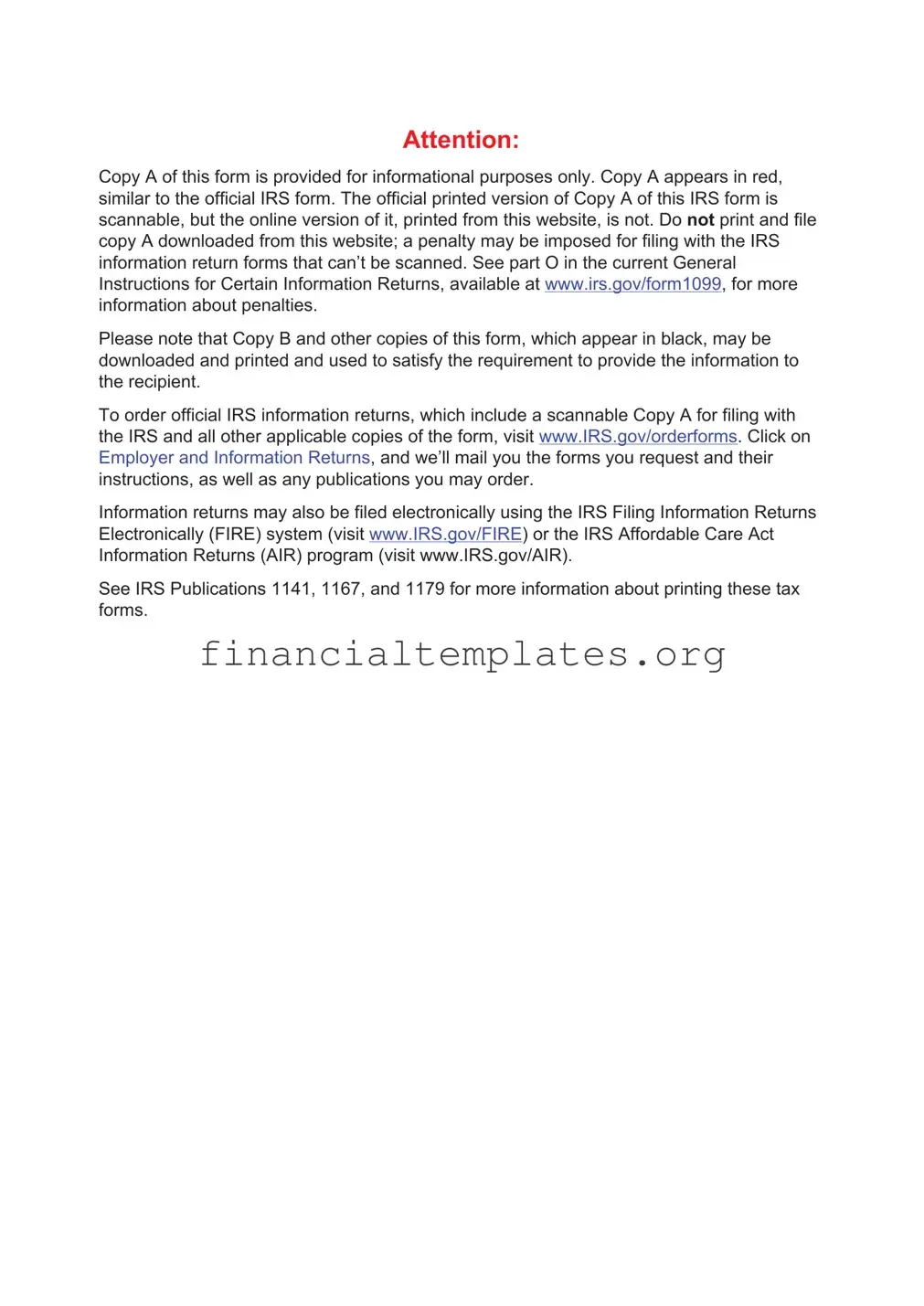The IRS 1098-T form, known as the "Tuition Statement," is closely related to several other IRS forms that also serve to report financial activities, particularly those with implications for individual tax filings. Similar to the 1098-T, the IRS 1098-E form reports interest paid on student loans during the year. Both forms are designed to provide taxpayers with information necessary to claim potential deductions or credits on their federal income tax returns, specifically focusing on educational expenses and student loan interest, respectively.
Another document resembling the 1098-T is the 1099-INT form. This form reports interest income from banks and other financial institutions. Much like the 1098-T provides information on tuition payments that can lead to tax benefits, the 1099-INT supplies data on earned interest that may affect one's taxable income. The common ground between these forms lies in their role in informing taxpayers about certain financial amounts that must be reported on their tax returns.
The W-2 form also shares a connection with the 1098-T through its purpose of reporting an individual's annual earnings and the taxes withheld by employers. While the W-2 pertains to employment income and tax withholdings, and the 1098-T to educational expenses, both forms are critical for individuals preparing their tax returns. They each provide key figures that the taxpayer must use to calculate their tax liability or refund.
Similarly, the 1099-MISC form, which reports miscellaneous income, parallels the 1098-T in how it informs taxpayers about other sources of income that could affect their tax obligations. Whether it's royalties, rent, or non-employee compensation, the 1099-MISC, like the 1098-T, is integral in helping taxpayers correctly report their annual income to the IRS.
The 1040 tax return form is another document connected to the 1098-T, as the information from the tuition statement is often used to fill out specific sections of the 1040 form. Taxpayers use the 1040 form to summarize their yearly taxable income, deductions, and credits, including those related to education tax benefits, which are supported by the data on the 1098-T.
The Schedule A (Form 1040) is directly impacted by information provided on the 1098-T when taxpayers itemize deductions. While the 1098-T focuses on education credits, Schedule A allows for the deduction of various types of taxes, medical expenses, and charitable donations. Both forms contribute to reducing taxable income through different types of allowed deductions and credits.
The 8863 form, titled “Education Credits (American Opportunity and Lifetime Learning Credits),” works hand in hand with the 1098-T. Taxpayers use the 1098-T to gather information about qualified education expenses that can be used on Form 8863 to calculate the education credits they're eligible for. Both are essential for taxpayers aiming to benefit from these specific educational tax credits.
Lastly, the 1098 form, which reports mortgage interest, resembles the 1098-T in its function of providing crucial financial information that can affect a taxpayer’s deductions. Just as mortgage interest can be a significant deduction for homeowners, the educational expenses reported on the 1098-T can lead to valuable tax credits or deductions for students or their families. Each of these forms plays a vital role in the tax reporting and deduction claiming process.



